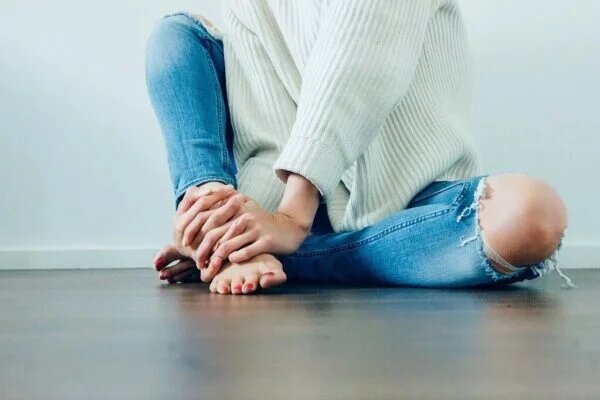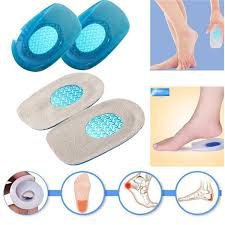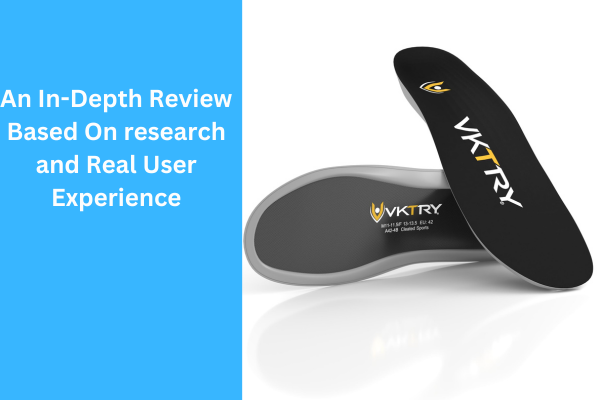Heel pain restricts your day-to-day movements, like breathing down your back and making every step a chore. Pain caused by plantar fasciitis, heel spurs, or being on your feet all day can greatly affect your quality of life. Luckily, specifically-made insoles can combat this irritating heel pain! You’ll find all the answers, “every type of Insoles for Heel Pain benefits types, how to choose the right one, and other helpful tips in this all-inclusive guide.”

Understanding Heel Pain

The causes of heel pain are numerous. It holds many reasons, a few of which include:
Heel Spurs
They are bony excesses that develop in the heel bone. Characterized by a searing pain in the arch of your foot, it is a classic sign that you have plantar fasciitis.
Achilles Tendinitis
Achilles’ heels are the things that can bring us down, but Achilles tendonitis causes nagging pain at the back of your heel.
Obesity
It adds more pressure to your heels, causing foot pain and unnecessary weight on( over) your head.
Why Insoles are Good for Heel Pain
Orthotic inserts, or insoles, can provide considerable relief for heel agony with the following advantages
Arch Support
Good arch support spreads the pressure over the entire foot instead of letting it stay focused on one part, which agitates the heel. It’s extremely important for those with flat feet or high arches.
Stability
For example, insoles can provide support and stability to the foot decreasing often occurring overpronation (excessive inward rolling of ankle-joint) or supination ( excessive outward movement).
Pain Relief
Insoles relieve two types of heel pain by eliminating the underlying causes, making life easier.
Improved Posture
Insoles that align your feet and ankles as you walk make a massive difference in the overall weight balance on different parts of your body and the pain felt by others, like knees, hips, and lower back.
TYPES Insoles for Heel Pain
There is a variety of insoles in the market for different needs and preferences:
3/4-Length Insoles
These insoles run from the heel to just short of the toes, giving targeted pressure without crowding at the toe box. Perfect for tight shoes like dresses and other footwear.
Heel Cups
These are cupped derbies that fill in around the heel and add an extra layer of cushioning while also helping to support your feet. Heel Cups also help for conditions such as heel spur and Achilles tendinitis.
Gel Insoles
With soft and flexible gel materials, these insoles provide excellent cushioning as well as shock absorbency. Those are a perfect fit for people who want comfort without comprising.
Orthotic Insoles
Custom-made orthotic insoles are specifically created to help the structure and shape of your foot. They’re recommended for extra support and serious or ongoing heel pain.
Finding The Appropriate Insole For Your Heel Comfort
Before we break down the best shoe inserts/work boot insoles, you need to think about a few things that will help you get what works best for your feet;
Foot Type
Know your foot type: flat feet, high arches, or a neutral arch. It will help you decide which insoles to consider with the right amount of support.
Heel Pain Cause
Find the source of your heel pain. So, if you have plantar fasciitis, use insoles with solid arch support.
Shoe Type
Ensure you have placed your insoles well into your shoes. These are perfect as full-length insoles for athletic shoes, but you might go with 3/4-length insoles or heel cups if you’re a dress shoe guy.
Material
Material of the Insoles To learn more, read our insole guide. Weight cushioning function: gel insoles balance, foam, and leather offer the best mix of comfort with support.
Activity Level
Consider how much you move and in what manner; a high-impact activity like running might need more than just basic cushioning for your footbed.
Brand and Reviews
Check brand and insole reviews with others with heel pain and see which worked for them.
How to Use Insoles in Maximum Effect?
Following these tips will help you fully utilize your insoles and get the most effective relief for heel pain.
Gradual Break-In:
When you start using new insoles, break them one pair at a time Start by wearing them for short intervals and then extend the duration as your feet get used to that.
Proper Fit:
Make certain the soles fit nicely into your sneakers, and don’t make any more uneasiness. If necessary, cut them to a shape appropriate for your shoe.
Footwear Choices:
Wear your insoles with proper shoes. If your arch needs additional support, insoles for plantar fasciitis may not be enough on their own. A good pair of supportive shoes with built-in arch support or the ability to add an insert can enhance the results you get from wearing insoles.
Stretching Exercises:
Our feet hold us up all day and deserve to be stretched out, so do some daily stretching exercises for your feet (and calves). This will reduce the strain and make sure that it does not hurt.
Rest and Ice:
In the case of intense heel pain, you need to relax your feet and hold an ice to decrease inflammation.
Monitor Wear and Tear:
The insole loses its action from time to time. Watch for worn areas and replace them as necessary to promote ongoing stability and comfort.
Custom Insoles vs Over-the-Counter Insole
You can choose between custom orthotics or over the counter for heel pain insoles. First, let me compare them to help you decide.
Custom Orthotics:
These are custom-built to an exact mold of your foot, giving you perfect support and alignment. They’re best for serious, chronic heel pain and can efficiently treat certain foot problems. Although more costly and prescription-only, they are possible choices.
Over-the-Counter Insoles:
Over-the-counter insoles are readily available and designed for a variety of foot conditions. They are less expensive and may be effective for mild to moderate heel pain. They are not as customized as custom orthotics but can work for many people.
Reasons for you to seek professional advice
If you have had severe heel pain that lasts longer than several weeks despite using shoe inserts, then it is time to visit your health care professional. You should instead see a podiatrist or orthopedic specialist to evaluate the heel pain and whatever is causing it. Treatment options can include custom-fitted shoes/orthotics, physical therapy, and other things your provider may suggest once they have a proper diagnosis.
Conclusion
The pain in the heel can be disruptive, and you need to find a remedy for that; this is why insoles exist. Insoles for Heel Pain—Insoles that provide cushioning, support, and stability are specifically designed to help those with heel pain remain active throughout the day.
When choosing your insoles, reflect on the nature of your feet (i.e., foot type), what seems to be creating the heel pain or discomfort, and especially any specific problems within a particular shoe. In addition, to make sure your Insoles truly are effective when in use and provide a comfortable experience, always follow best practices on breaking them into wear gradually with the footwear you plan to support the added cushion they will bring.
Whether you opt for any orthotics insoles, investing in quality inserts reduces heel pain and enhances your quality of life. Don’t let heel pain hold you back—take proactive steps to find the right insoles and enjoy the benefits of pain-free, comfortable feet.


